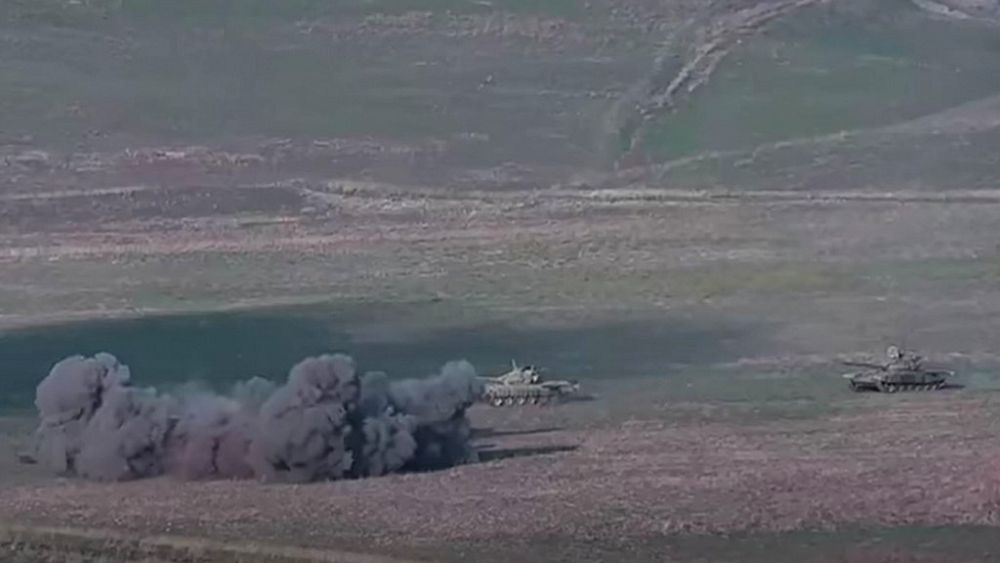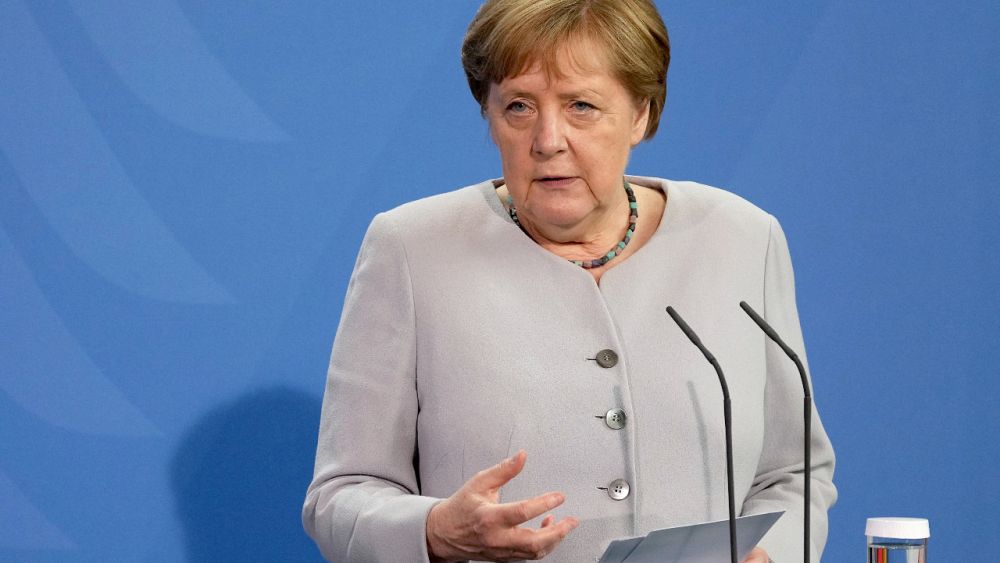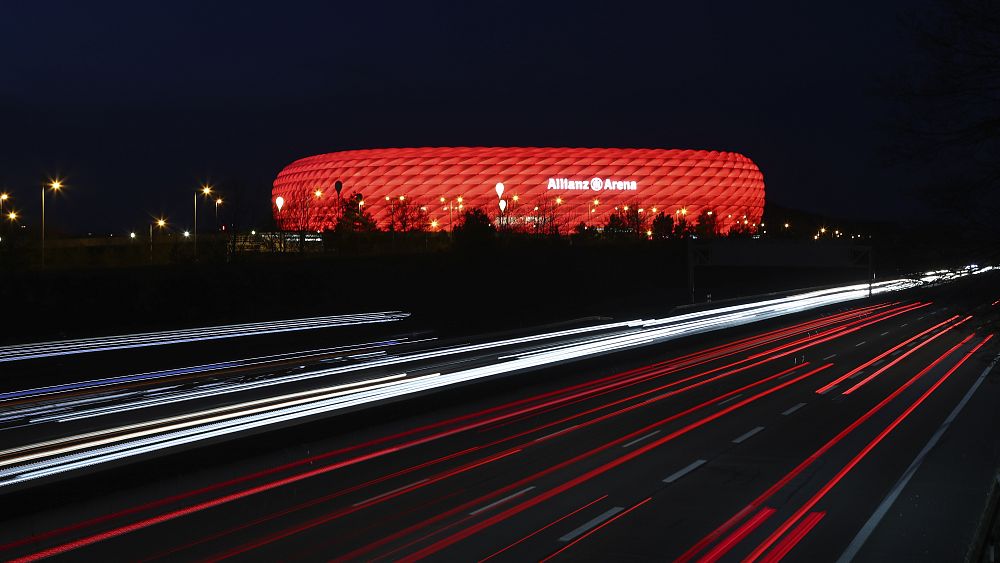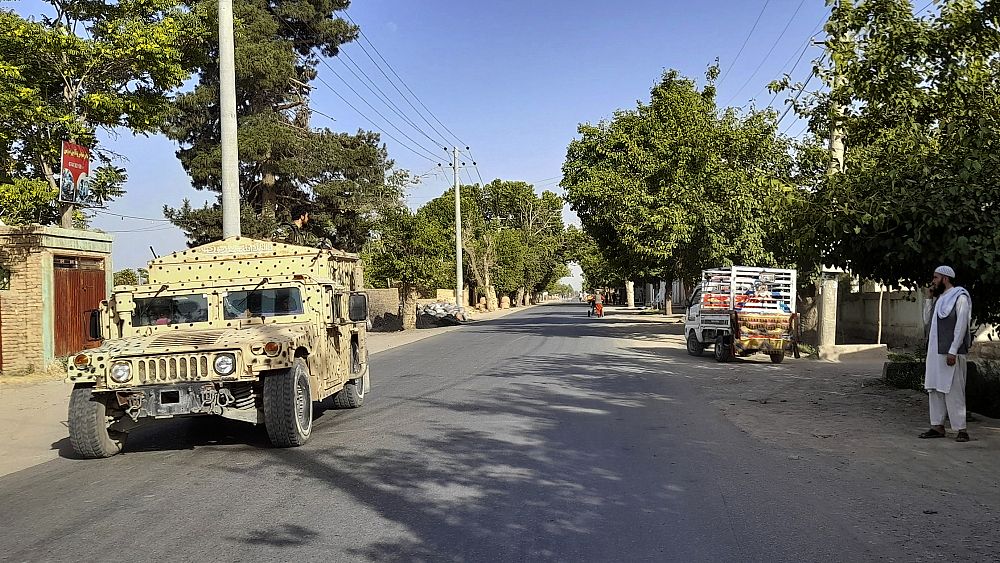Fighting between Armenia and Azerbaijan broke out on Sunday over the separatist region of Nagorno-Karabakh.
Armenian authorities said that at least 16 people had been killed and some 100 wounded and Azerbaijan”s president said there had been civilian casualties.
Nagorno-Karabakh is an ethnically Armenian region within Azerbaijan that has been out of Azerbaijan’s control since a 1994 Russian-brokered ceasefire between the countries.
Both sides have had a heavy military presence along a demilitarised zone separating the region from the rest of Azerbaijan.
Both countries have declared martial law in some areas amid the escalation in fighting, meaning the military takes over the civilian government.
What is each side saying?
Armenia said the fighting began with an Azerbaijani attack, but Azerbaijan said Azerbaijan was launching a counteroffensive.
Armenian Prime Minister Nikol Pashinyan said the “aggression was pre-planned and constitutes large-scale provocation against regional peace and security.”
The Armenian Defence Ministry said two Azerbaijani helicopters were shot down and that Armenian forces hit three Azerbaijani tanks earlier in the day.
Azerbaijani President Ilham Aliyev led a security meeting during which he said there were civilian losses due to the fighting.
“Armenia’s military provocation is a planned provocation. They have been preparing for this provocation for a long time. Our operative information showed that Armenia intends to start a new war against us,” Aliyev said.
What has the international reaction been?
European Council President Charles Michel tweeted that the fighting was a “serious concern.”
“Military action must stop, as a matter of urgency, to prevent a further escalation,” Michel said.
Turkey’s ruling party spokesman Omer Celik tweeted: “We vehemently condemn Armenia’s attack on Azerbaijan. Armenia has once against committed a provocation, ignoring law.”
He said Turkey would stand by Azerbaijan and said, “Armenia is playing with fire and endangering regional peace.”
Russian President Vladimir Putin spoke on the phone with Armenia’s prime minister, the Kremlin said in a statement, and expressed “grave concern” over the hostilities.
Albanian Prime Minister Edi Rama, who is chairperson of the Organisation for Security and Cooperation in Europe (OSCE), called for a de-escalation of the situation.
“I urge all involved to immediately return to the ceasefire before the human toll of this conflict increases any further,” Rama said.
The OSCE has historically worked to broker peaceful negotiation between the countries.
A history of conflict
The two countries, both formerly part of the Soviet Union, do not have formal diplomatic relations.
The disputed region of Nagorno-Karabkh became part of Azerbaijan as the Soviet Union began to fall and the republics gained independence.
But in 1988 the majority Armenian population in the region started mass protests calling to be unified with Armenia which led to the Nagorno-Karabakh war.
The war lasted until Russia brokered a ceasefire between the countries in 1994 but no peace treaty was signed.
Most countries recognise the region as Azerbaijani territory and in 2008, the UN passed a resolution declaring such and calling for the withdrawal of Armenian troops.
The European Parliament also called for the withdrawal of Armenian forces in 2010 but said an international force should be sent to manage the territory during a transition period.
Clashes broke out again in 2016, resulting in hundreds of casualties until a ceasefire was agreed to in Moscow.









